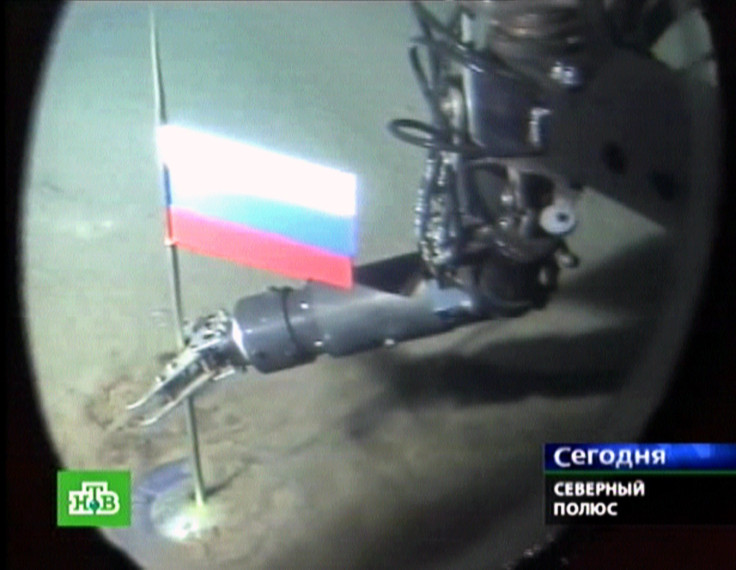Russia Stakes Claim Over 463,000 Square Miles Of Arctic Territory

The Russian foreign ministry announced Tuesday that it has submitted a fresh bid to the United Nations to extend its territory in the Arctic. The move comes 14 years after the Russian government made a similar bid -- that was rejected by a U.N. commission -- to extend its Arctic shelf border to encompass areas believed to be rich in oil and natural gas.
The ministry said that Russia is claiming over 463,000 square miles of sea shelf extending more than 350 nautical miles from the shore, adding that its bid was backed by “ample scientific data collected in years of Arctic research.” However, other nations bordering the North Pole -- the U.S., Canada, Denmark and Norway -- are unlikely to support the claim.
Under the 1982 U.N. Convention on the Law of the Sea, international waters surrounding the North Pole -- and the North Pole itself -- are not owned by any nation. The stakes of the countries surrounding the region are limited to an Exclusive Economic Zone (EEZ) of 200 nautical miles adjacent to their coasts.
However, if the continental shelf adjacent to its shore shelf extends beyond this limit, the boundaries of the EEZ can also be extended. According to the latest Russian bid, the shelf extends far north of the Eurasian land mass -- under the northern ice cap.
Competing territorial claims over the Arctic are spurred by the fact that the region is thought to possess vast, untapped reservoirs of oil and natural gas. According to a U.S. Geological Survey assessment, 30 percent of the world’s undiscovered gas and 13 percent of the world’s undiscovered oil may be found there, mostly offshore under less than 1,700 feet of water. Most of the natural gas reservoirs are located in internationally-recognized Russian territories.
With Arctic Sea ice melting as a result of climate change, these resources are expected to be increasingly accessible to drilling in the coming years.
This is not the first time Russia has publicly displayed its expansionist ambitions in the Arctic. In 2007, Moscow staked a symbolic claim to the Arctic by installing the Russian flag -- made of titanium -- on the seabed at a depth of 13,980 feet using a miniature submarine equipped with a robotic arm.

“If a hundred or a thousand years from now someone goes down to where we were, they will see the Russian flag,” Artur Chilingarov, a former member of the Russian parliament, who led the expedition, said, at the time.
Earlier this year, the Russian military conducted a drill in the Arctic involving 38,000 personnel, over 50 surface ships and submarines, and 110 aircraft.
The latest claims, which come at a time of deteriorating relations between Russia and the West, were criticized by Greenpeace -- the activist group whose members were arrested by Russian authorities in 2013 when they attempted to board Gazprom’s Prirazlomnaya drilling platform.
“The melting of the Arctic ice is uncovering a new and vulnerable sea, but countries like Russia and Norway want to turn it into the next Saudi Arabia,” Greenpeace Russia’s Arctic campaigner Vladimir Chuprov reportedly said. “Unless we act together, this region could be dotted with oil wells and fishing fleets within our lifetimes.”
© Copyright IBTimes 2024. All rights reserved.












